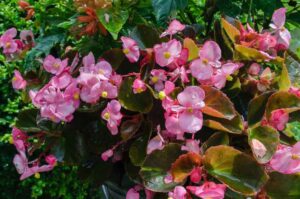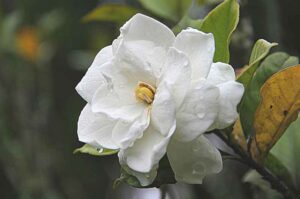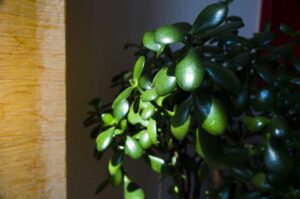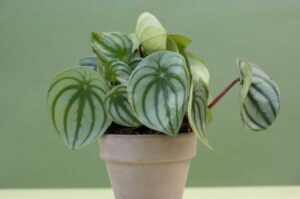Care guide to Jessenia Pothos – Epipremnum aureum ‘Jessenia’
Jessenia Pothos

Jessenia Pothos is a beautiful variety of Pothos, having green on green variegated leaves. Like the other Pothos, the Jessenia Pothos is also easy to grow and easy to maintain indoor plants.
It is an extremely easy indoor plant for beginners to start gardening. And also suitable for them, who want to have an indoor plant in their house, but don’t have a lot of time to take care of them.
Because the Jessenia Pothos demands very less care.
This plant belongs to the Araceae family, and it is originated from French Polynesia.
The Jessenia Pothos is a fascinating and easy to grow trailing vine, that can grow in a wide range of temperatures, and different lighting conditions. It can be grown on a trellis, or on a moss pole, and also in a hanging basket.
In every place, this plant will make your inner house lush and beautiful.
In addition to that, the Jessenia Pothos has also air-purifying quality. It can provide you the clean fresh air, by absorbing all the polluting gases from the atmosphere.
Therefore, it is a worth growing plant for everyone.
Jessenia Pothos in a nutshell
- Botanical name- Epipremnum aureum ‘Jessenia’
- Common name- Jessenia Pothos
- Family- Araceae
- Plant type- Trailing vine
- Plant size- The vine can grow up to 10 feet, even longer. It is a vigorously growing plant.
- Soil- Plant can grow well in well-drained fertile soil.
- Light- Medium to bright filtered sunlight is ideal for this plant. However, can grow in low light also.
- Temperature- The ideal temperature range is 65 to 75 degrees Fahrenheit.
- Humidity- Higher humidity is suitable for this plant, but it also grows well in the low humid area.
- Water- The plant never demands heavy water. It can also survive if you forgot to water for a couple of weeks. However, you can apply water when the top two-inch layer is dry.
- Fertilizer- Apply general-purpose balanced house plant fertilizer. No need for special care.
- Propagation- Plant can be successfully propagated through stem cutting.
- Repotting-Plant has to be repotted once it has shown the root-bound symptoms.
- Toxicity- Plant is toxic in nature, due to the presence of calcium oxalate crystals in its cell sap.
A complete care guide on Jessenia Pothos
After growing the Jessenia Pothos from the past 8 to 9 months, I found that it is a fairly easy and hassle-free plant to grow.
Here is a complete care guide on how to grow and take care of Jessenia Pothos.
The suggestions given in this blogpost are completely based on my observation from the past few months.
Soil requirement
The Jessenia Pothos doesn’t demand any special kind of soil for its proper growth. But a fertile soil with good drainage will make the plant grow faster than normal soil.
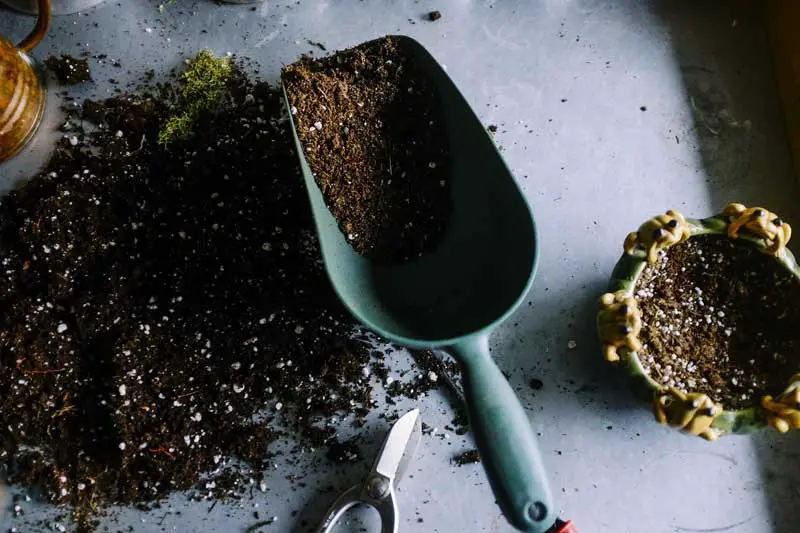
The plant will grow well with the normal garden soil, with some perlite added to it. Perlite improves the drainage property of the soil.
You can also add some organic compost, or vermicompost/wormcast to the soil to make it more fertile so that there should be accelerated growth of the plant.
You will love to read our article about How to make perfect potting soil for your indoor plants.
Light requirement
The ideal lighting condition is medium to bright indirect sunlight. Perfect lighting conditions keep the variegation of the leaves proper and shiny.
Low light can promote the plant to lose its variegation on the leaves. However, the plant can also survive in low light conditions.
The plant can grow well in low light areas of your house. Therefore, it can be an ideal choice for the dark places of your home, like in your bathrooms and dark corners.
An east-facing or a north-facing window is ideal for this plant to sit in.
If the plant is getting direct sunlight, then the leaves may get burnt, hence it is not advisable to keep this plant under direct sunlight for a longer period of time.
Temperature
The plant grows in normal room temperature. The ideal temperature is around 65 to 75 degrees Fahrenheit (18 to 23 degrees Celcius).
Plant will also grow properly if the temperature fluctuates up to plus or minus 5 to 6° C.
At temperature below 10 degrees Celcius, the plant struggle to grow.
The thumb rule is if you are feeling comfortable at a temperature, then the plant is also comfortable at that temperature.
Humidity
Like other Aroids, Jessenia Pothos never craves for higher humidity. It can grow properly in areas with low humidity as well.
Generally, all plants belonging to the Araceae family loves to grow in a humid place, except a few.
However higher humidity will put a smile on your face. Under humid conditions, this plant will grow vigorously.
This plant is well adapted for both humid and dry places. Hence no need to worry wherever you are living, just grow this plant happily.
Water requirement for Jessenia Pothos
There is no scheduled timing for watering this plant. I water it whenever I found the top two-inch soil dry.
The good news is that you can even skip one or two watering in between, the plant will not be affected by the dry soil, very much.
However, if the plant will remain unwatered for a real long period of time, then there might be an issue of plant drooping.
Never let the plant sit in waterlogged soil, it will surely rot the roots of the plant. To prevent root rotting you can improve the drainage of your soil, and also apply less water.
Fertilizer
Apply a balanced house plant fertilizer as per the dose recommended by the manufacturer. That is enough. Jessenia Pothos never demands any special nutrients.
You can add some organic matter to the potting soil to improve the physical property of the soil.
How to propagate the Jessenia Pothos plant?
The most successful method to propagate this plant is the stem cutting method.
Here is a step by step process, how you can do this
- Cut the stem of the parent plant in small pieces, in such a way that the cutting should contain at least one or two nodes and two leaves.
- Clear the bottom part of the cutting as it will go into the water.
- Put the cutting in a jar of water, in such a way that, the bare bottom stem will remain inside the water, whereas the leaves will remain above the water.
- After a few days, roots will start to develop from the nodes.
- Then plant the cutting in a new pot, filled with new potting mix.
- Initially take delicate care of the newly planted cutting, as it takes some time to start growing properly.
Within a short period of time, you can successfully multiply the no. of Jessenia Pothos.
Repotting
This is a quick-growing plant. Therefore, you have to find a bigger size pot once. every year.
Whenever you are getting the symptoms of root bound, go for repotting in a one to two-inch larger size pot.
Here is a step by step guide about repotting Jessenia Pothos
- Uproot the plant from the existing pot, and clean the soil adhered to it.
- Check, if there is any symptom of root rot, If found, cut, and remove them using a sterilized knife.
- Take a new pot about one to two-inch larger than the old one.
- Plant the uprooted Jessenia Pothos in the new pot, and fill it with new potting soil.
- Take proper care of the freshly repotted plant.
The ideal time to repot this plant is in the summer and spring season.
Pest and diseases
The plant is susceptible to diseases like root rot, and yellowing of leaves. Both occur due to overwatering.
To control these diseases, you can change the potting soil, and add some agents to improve the drainage of the soil. You can also change the irrigation pattern you are following. Apply water only when the top two-inch soil layer is dry.
Often mealy bugs attack these plants. You can also find some common pests like the whiteflies or thrips.
To control these pests, you can spray neem oil or any other insecticide.
FAQ
Is Jessenia Pothos toxic in nature?
Yes, Jessenia Pothos is toxic in nature. The cell sap contains crystals of Calcium oxalates, which harmful for humans as well as animals if ingested accidentally.
It may cause irritation in the mouth, and buccal cavity, if consumed. It also can cause some severe health issues.
It is better to keep this plant away from the pets, and your children.
Why the leaves of my Jessenia Pothos losing their variegation?
It is because the plant is not getting enough light. To fulfill its energy demand in a low light condition, the plant is converting all its variegated parts to the green part, so that it can produce higher energy.
To prevent this issue, you have to keep the plant, in a place, which is getting proper medium to bright indirect sunlight.
From where can I get a Jessenia Pothos plant for sale?
The Jessenia Pothos plant is not easily available everywhere. You can ask the local garden centers if they can arrange them for you. You can also Google it. You will get a good deal.
Conclusion
It is really a worthy indoor plant to have. Due to its low maintenance, and quick growth habits it is like a trump card for the beginners. Pro gardeners also love to have them in their collection, because of their unique appearance.
I hope you had also decided to grow a Jessenia Pothos plant, in your home, and increase the greenery of your surroundings.
HAPPY GARDENING.


